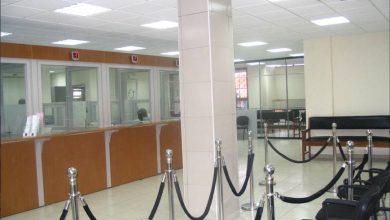Mera not making sense on fuel price hike
Explanations from the Malawi Energy Regulatory Authority (Mera) to justify the November 22 rise in fuel pump prices have reminded me of a situation in economics that “prices are sticky going downwards”.
What the statement means is that when costs of goods or services go up, prices consumers pay rapidly rise and in some cases even before the importers and producers incur the said costs! When the same prices go down, on the other hand, the reaction is not as swift. The situation is characterised by reluctance, feet dragging and varying justifications.
To date, Mera has issued two statements. The first one, signed by board chairperson Bishop Joseph Bvumbwe, explained why Malawians should be buying a litre of petrol at K990.50 from K932.50 (a 6.2 percent increase), diesel at 6.9 percent more from K935.60 to K990.40 and paraffin at K785.80 from K735.30, representing a 3.93 percent hike.
Ironically, the announcement of fuel price hike—the third since July after 20 months of stable prices—coincided with news of a reduction in international oil prices. Naturally, the reaction of many a consumer was that prices at local pumps should not have gone up.
But Mera, through the Automatic Pricing Mechanism (APM) policy adopted in May 2012, does not instantly respond to global oil prices in real time. To ensure stability and sanity, the country reviews prices based on developments in the previous month, call it one month minus-one. This means the “cheaper fuel” is yet to get to Malawi.
Back to the APM, the policy entails that a downward or upward adjustment in pump prices should be effected in the event of set variables—in-bond landed cost of fuel, the exchange rate and world oil prices—changing by plus or minus five percent.
From the Mera statement announcing the new prices, the kwacha depreciated 0.57 percent between July and October while in-bond landed costs of diesel and paraffin increased by 3.64 percent and 3.94 percent, respectively, and petrol declined by 1.80 percent compared to the average in September. You do not need to be a statistician to see that none of the variables was above the five percent threshold to influence a price review as per the APM!
Next, Mera chief executive officer Collins Magalasi issued another statement stating that while the variables may have been below the five-percent threshold, the pump price hike was justified to, among other things, replenish a depleted Price Stabilisation Fund (PSF) that ensured consumers benefitted from stable prices for some time.
Under the APM fuel pump price determination policy, reductions in landed costs build up the PSF. In other words, instead of passing on the benefits of low pump prices, consumers are given “stable” prices.
That the country uses the one-month-minus-one mechanism is not in dispute. Neither is the fact that the PSF stabilises pump prices.
What Mera is failing to explain or clarify, in my view, is what triggered the pump price hike this time around when all indicators point to the fact that variables were far below the five percent threshold. There is also need for transparency in the management of the PSF which raises money from consumers. Who audits this fund? Can an independent audit firm be engaged to audit the fund and how consumers have benefitted from the same over the years?
It is not enough to say an independent audit checks the PSF. These are public funds, the audits should be published.
Further, Mera does not make sense when it says besides the landed costs and factors such as transit losses, industry margins, fuel levies and other factors at various levels in the supply chain also impact the final pump price. Surely, that is public knowledge. In any business there are markups and such factors have always been built in prices. They have not just come into play in October 2018. I find this justification not convincing, to say the least.
Unless Mera tells the nation that the APM has been suspended, Malawians know that fuel pump prices are determined by the Free On Board (FOB) prices based on the average monthly global price for Arab Gulf market and exchange rate of the kwacha against the dollar.
To say that the PSF was depleting and risked a negative balance when consumers all along were benefitting from half of the fund, is an insult to their intelligence. It does not add up.
Mera, as a regulator, should be seen to be transparent and accountable in how it manages the PSF and all other levies consumers pay in the petroleum pump price buildup. It should not be seen to be shifting the goalposts as it appears to be the case with the recent pump price hike.



